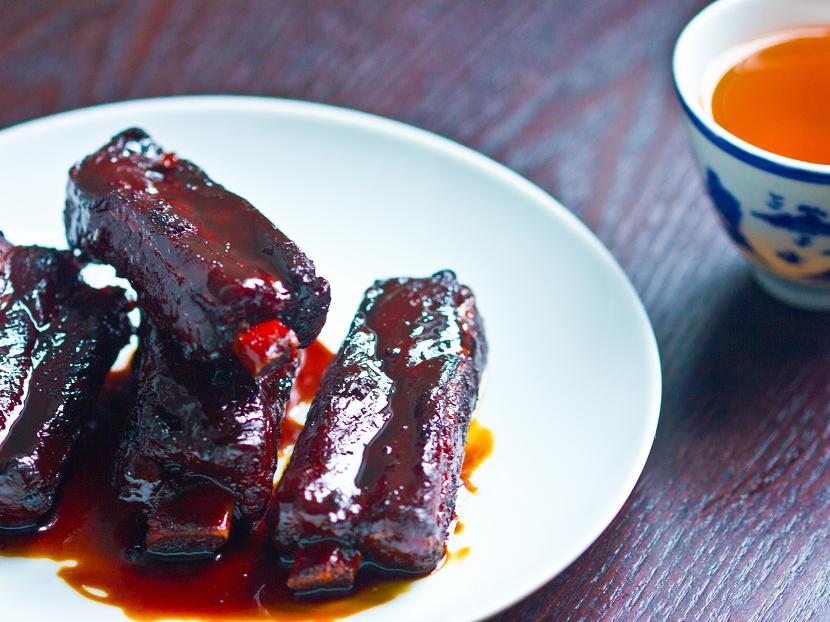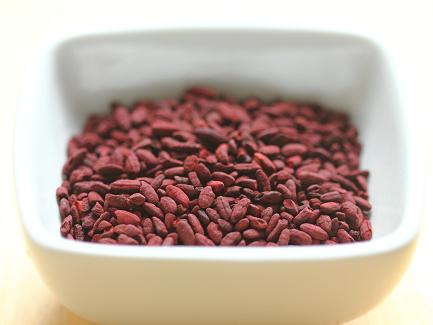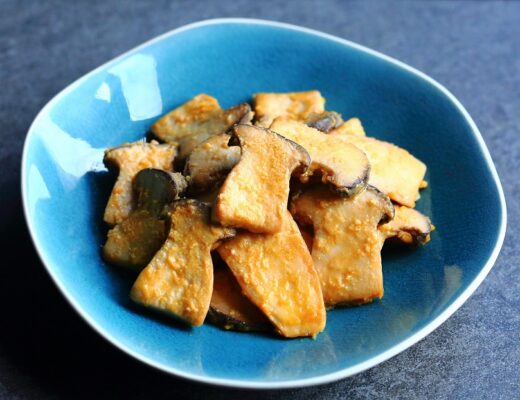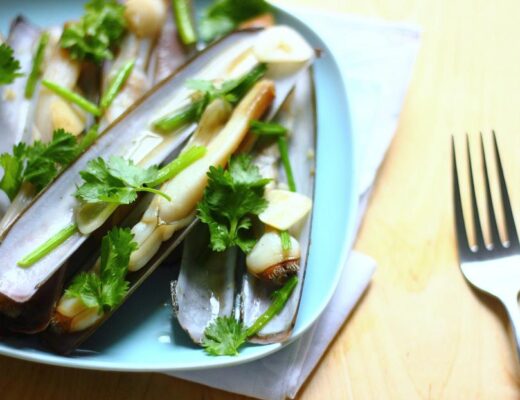Last Updated on July 22, 2021 by Simon Fan
Wuxi, pronounced “wooshi,” is a vibrant city in Jiangsu Province and about two hours outside Shanghai. Among the many things Wuxi is known for, its pork spare ribs would be my top pick.
Wuxi spare ribs (无锡排骨) is considered one of the signature dishes of Jiangsu cuisine. Tender and juicy, rich but not greasy, these ribs coated with an irresistible sauce will have you licking your fingers and yearning for more.
Wuxi locals take this dish seriously. Only top-quality spare ribs, with the sternum bones, cartilage, and surrounding meat removed, are used for the dish. This part of the ribs, called St. Louis cut in the US, is preferred by many chefs to baby back ribs because of their richer flavor.
Traditionally, the spare ribs are first cured with salt and sodium nitrate for three reasons:
- to flavor the meat
- to change the texture of the meat so it can endure extended cooking without becoming mushy or falling apart
- to give the meat its red hue
Nowadays, many recipes omit sodium nitrate for the curing process. Red yeast rice, a natural coloring ingredient used frequently in Chinese cuisine, is added during braising to give the ribs their signature red hue.
The seductive flavor of Wuxi spare ribs is the result of a long braising with an ensemble of Shaoxing wine, dark soy sauce, star anise, cloves, cassia bark (Chinese cinnamon), and ginger. A fair amount of sugar is added to the sauce at the final stage of cooking to give the dish a pleasant sweet edge, typical of Wuxi dishes.
In China, you can get Wuxi spare ribs cooked and vacuum-packed at gourmet food stores. I haven’t seen them being sold in the US. But the truth is, you can make these ribs easily at home following the recipe below. It does take some time and effort, but you’ll be immensely rewarded!
Wuxi spare ribs (无锡排骨)
Serves 2
Ingredients
18 oz (510 g) pork spare ribs, cut in half crosswise by your butcher
½ tablespoon salt
1 teaspoon vegetable oil
2 scallions, cut into 2-inch (5 cm) lengths
2-inch (5 cm) piece of ginger, cut into ¼-inch-thick (6 mm) pieces
2 whole star anise
2-inch (5 cm) piece of cassia bark
5 cloves
2 tablespoons Shaoxing wine
2 tablespoons dark soy sauce
1 tablespoon light soy sauce
1 tablespoon red yeast rice (see note below)
3 tablespoons sugar
Salt and freshly ground white pepper
Directions
- Cut the ribs into single-bone pieces. Rub them with the salt and cure for 12 hours in the refrigerator.
- Blanch the ribs in boiling water for 3 minutes. Rinse in a colander to remove any scum, then drain well. Pat dry with paper towels.
- Place a wok or skillet over medium-high heat until hot, then swirl in the oil. When the oil starts to shimmer, add the scallions, ginger, star anise, cassia bark, and cloves, and stir-fry until fragrant, about 30 seconds. Add the ribs and wine, and continue to stir-fry for 30 seconds. Next, add both soy sauces, and stir and mix until the ribs are well coated with the sauce, about 30 seconds.
- Add water just enough to cover the ribs. Bring the liquid to a boil, then reduce to a simmer. Use cheesecloth to make a loose packet of red yeast rice, leaving room for the rice to double in size while cooking. Add the packet to the braising liquid.
- Cover and simmer, skimming off any surface scum from time to time, until the ribs are tender, about 1 hour.
- Transfer the ribs to a bowl and cover to keep them warm. Strain the braising liquid through a fine-mesh sieve into a pan. Add the sugar and bring to a boil. Cook until the liquid has reduced to ⅔ cup (160 ml), about 10 minutes. Add the ribs to the pan, and stir to coat them with the sauce. Continue to reduce the sauce by half or until it’s richly flavored, syrupy and nicely coats the ribs. Adjust the seasoning with salt and pepper as needed and serve.
Note: Red yeast rice (红曲米) is the product of the mold Monascus purpureus grown on rice, a method discovered more than a thousand years ago in China. In Chinese cuisine, it’s used as a natural coloring to give dishes a bright red color, such as Peking duck and Cantonese char siu. It’s available at Chinese grocery stores. Omit if you can’t find it.





Steamed pork ribs with scallion oil | Soy, Rice, Fire
December 2, 2024 at 9:19 AM[…] love cooking pork ribs and have introduced my favorite recipes featuring them on this blog, such as Wuxi spare ribs, steamed glutinous rice and pork ribs in lotus leaf, as well as white Asian radish and pork rib […]